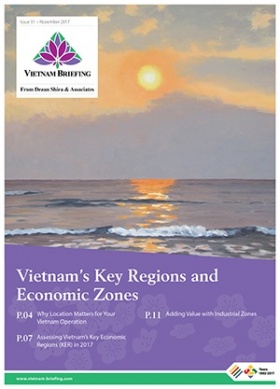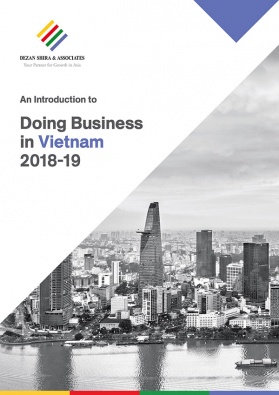Vietnam and the Middle East: Bilateral Trade Relations
Bilateral trade between Vietnam and the Middle East has increased significantly in the last few years. However, it is still modest compared to Vietnam’s trade with its major trading partners. Exporters may initially face unique market challenges in the region, but in the long run, the region offers huge potential for firms involved in sectors such as garments and textiles, mobile phones, and agricultural products.
Bilateral trade
Bilateral trade between Vietnam and the Middle East reached US$12.8 billion in 2017, up 17.4 percent compared to 2016. Vietnam enjoyed a trade surplus of US$6.4 billion.
Total Vietnamese exports to the entire region reached US$9.6 billion. Exports to the major markets in the region grew by 11.98 percent in 2017 compared to 2016, to US$8.6 billion.
Total imports from the Middle East reached US$3.2 billion in 2017. Imports from the top trading partners reached US$2.85 billion, up 3.16 percent from 2016.
Major goods
Imports
Vietnam mostly imports raw materials such as plastics, liquefied gas, electronic parts, machinery, and animal feed from the Middle East to support its domestic production.
Exports
Vietnamese exports mostly include mobile phones, computers, electronics, seafood, footwear, garment and textiles, wood products, and fibers.
In addition, agricultural exports such as rice, pepper, cashew nuts, natural rubber, vegetables and fruit, and coffee beans also account for a significant share of the total exports.
Top trading partners
United Arab Emirates
United Arab Emirates (UAE) is the largest economic and trade partner for Vietnam in the region. Vietnamese exports to the country reached US$5.5 billion in 2017, while imports reached US$570 million. Mobile phones and parts accounts close to 70 percent of the total Vietnamese exports to the UAE.
Other major Vietnamese exports include mobile phones, computers and spare parts, machinery, garments and textiles, and footwear. In the agriculture sector, major export commodities include seafood, fruits and vegetables, pepper, and cashew nuts.
Major import commodities include liquefied petroleum gas (LPG), plastics, animal feed, and base metals.
Saudi Arabia
In 2017, Vietnamese exports to Saudi Arabia reached US$432 million, while imports amounted to US$1.3 billion.
Major exports to Saudi Arabia include mobile phones and telephones, seafood, garments and textiles, and wood products.
The top imports include plastics, LPG, and chemical products.
Kuwait
Exports to Kuwait amounted to US$62 million in 2017, while imports reached US$ 287.6 million. Top exports were seafood, fruits and vegetables, and wood products, while major imports were plastics and LPG.
Turkey
Exports to Turkey were close to US$2 billion in 2017, with major export commodities being computers and electronics, mobile phones and telephones, yarn, and machinery. Agricultural exports included seafood, pepper, and tea.
Imports from Turkey in 2017 reached US$224 million, with major commodities being machinery, fabrics, pharmaceutical products, and chemicals.
Both countries are planning to increase bilateral trade to US$4 billion by 2020.
Others
Other trading partners in the region include Qatar and Iraq. Imports from Qatar in 2017 reached US$138 million, with plastics accounting for over half of the total imports, while LPG, base metals, and chemicals accounted for the rest.
Exports to Iraq in 2017 reached US$325.7 million in 2017 with rice and seafood being the major export commodities.
Going forward
The Vietnamese government is currently working on a plan to create more favorable conditions by 2025 to increase bilateral trade between Vietnam and the Middle East. While trade has picked up in the last few years, the numbers are still modest compared to Vietnam’s trade with its traditional partners such as the US, EU, and South East Asia.
The Middle East offers huge opportunities for Vietnamese exporters, especially ones involved in garments and textiles, footwear, mobile phones, agricultural products. However, there are some challenges that exporters may face in the region. They need to be aware of cultural and religious differences, trade regulations, food habits, competition from other Asian exporters, and high transportations costs to have a competitive edge in the region.
Vietnam Briefing is produced by Dezan Shira & Associates. The firm assists foreign investors throughout Asia and maintains offices in China, Hong Kong, Indonesia, Singapore, Vietnam, India, and Russia.
Please contact vietnam@dezshira.com or visit our website at www.dezshira.com.
- Previous Article State Divestment: Exciting Opportunities for Investors
- Next Article Vietnam Amends Business Registration Rules
































